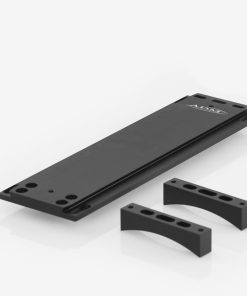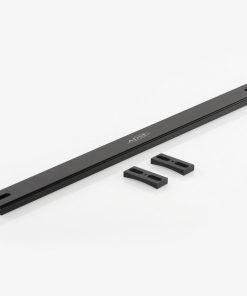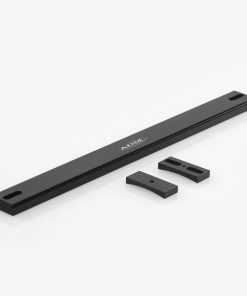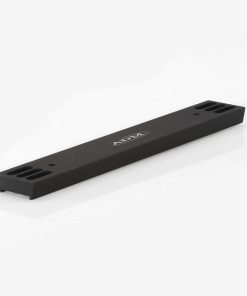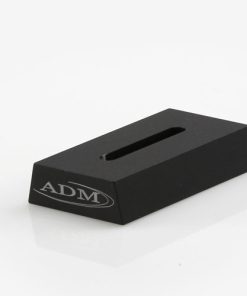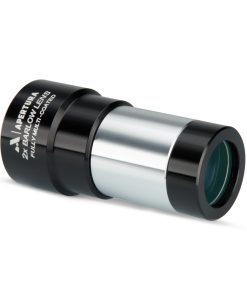Tele Vue Dioptrx Astigmatism Correcting Lens – 0.75 Diopter – DRX-0075 TeleVue
$ 119,00 $ 47,60
Tele Vue Dioptrx Astigmatism Correcting Lens – 0.75 Diopter
Tele Vue’s Dioptrx Astigmatism Correcting Lens – 0.75 Diopter is a special corrector lens, capable of connecting and securing onto the tops of over 20 Tele Vue eyepieces with long eye relief. The Dioptrx series of lenses are designed to compensate for astigmatism of the human eye. This gives you the sharpest full-field observing possible.
Tele Vue Dioptrx models are available in 0.25 diopter steps, from 0.25 up to 3.5 diopters, and are rotatable for tuning to the best orientation. A series of engraved letters on the barrel helps to monitor their orientation. Simply choose the Dioptrx model that matches your eyeglass prescription for astigmatism.
To overcome the common vision limitation called astigmatism, which the majority of people have, Tele Vue has developed a corrector which fits directly onto the eyepiece. Previously, the only way to correct for this was by wearing eyeglasses. That is, until now! Tele Vue Dioptrx Astigmatism Correcting Lenses extract the maximum visual performance you can get from your telescope and eyepieces. All the Dioptrx lenses are multi-coated glass in anodized aluminum housings, with rubber eyeguards for comfort.
Recommended for Correcting These Tele Vue Eyepieces:
- 31 mm Nagler type 5
- 26 mm Nagler type 5
- 41 mm Panoptic
- 35 mm Panoptic
- 27 mm Panoptic
- 22 mm Panoptic
- 55 mm Plossl
- 40 mm Plossl
- 32 mm Plossl
- All Radians (18 mm thru 3 mm)
- All Nagler type 4 (22 mm, 17 mm, 12 mm)
To Choose a Dioptrx Correcting Lens:
- First, look at your eyeglass prescription for any astigmatism in your dominant eye, which is the one you primarily use for observing
- Second, note the longer focal length of your Tele Vue eyepieces that apply, and obtain a Dioptrx lens for that value of astigmatism on your prescription.
Observers do not need eyeglasses to compensate for near- or far-sightedness since telescopes can focus out these limitations. Furthermore, other eyeglass characteristics, such as bi-focal, tri-focal, or vari-focal (progressive) designs are severely detrimental when trying to view a large field at infinity. In the past, it was recommended to get a special pair of “astronomy-only” eyeglasses that only has your astigmatism correction and multi-coatings. It is suggested to follow a procedure to determine at what size exit pupil your astigmatism needs correction since at higher powers (with their smaller exit pupils) eyeglasses may not even be necessary. Note: large exit pupils are typical for viewing with large aperture instruments, such as Dobsonians, and for wide angle viewing with small refractors.
Tele Vue has found that 2 diopters of eyesight astigmatism are detectable down to a 1 mm exit pupil, while 1 diopter is detectable at a 2 mm exit pupil. Dioptrx lenses, therefore, obviate the need for dedicated “astronomical eyeglasses”. The primary benefit is the potential for an optimized correction in the amount and orientation of eyesight astigmatism in astronomical viewing. The ability to compensate for both orientation and astigmatism, as your eyesight changes, is another advantage. And, they eliminate eyeglass frame and discomfort problems when viewing with your telescope.
Quick Shipping and Professional Packaging
Due to our longstanding partnership with UPS FedEx DHL as well as other major international carriers, we are able to provide various shipping options. Our warehouse personnel are well trained and will be able to pack your goods in accordance with the exact and precise specifications. Your goods are thoroughly checked and securely secured prior to shipment. Everyday we deliver hundreds of packages to our customers from all over the world. Our determination to be the biggest online retailer in the world is shown by this. The warehouses are located situated in Europe in the same way as they are in the USA.
Note: Orders containing multiple items will have a separate processing period for each item.
We will carefully examine all products before they are shipped. Today, the majority of orders will be delivered within 48 hours. The delivery time will be between 3-7 working days.
Returns
We don't manage the stock at our warehouse and factory. The actual inventory may fluctuate at any time. It's possible that you may not receive your order once it's been placed.
Our policy is for 30 days. We are unable to return or exchange your purchase after 30 days since the purchase.
In order for your item to be eligible for return the item must not be opened and in the condition you received it. It must also remain in the original packaging.
Related products
Telescope Accessories
Telescope Accessories
ADM Accessories Vixen Style Dovetail for Celestron 9.25″ SCT – VC925 ADM
Telescope Accessories
ADM Accessories Vixen Style Dovetail for Celestron C8 – VC8 ADM
Telescope Accessories
Telescope Accessories
Telescope Accessories
ADM Accessories CGEM Knob Upgrade – Two Orange Anodized Spreader Bar Knobs – CGEM-SB-OR ADM
Telescope Accessories
ADM V Series Dovetail Bar for Celestron 8″ SCT – Extra Long – VC8-XL ADM
Telescope Accessories
ADM Accessories Mini Dovetail Bars for Mounting – MDS-M8 ADM
Telescope Accessories
ADM Accessories Vixen Style Dovetail for Celestron 11″ SCT – VC11 ADM
Telescope Accessories
ADM Mini Dovetail Bar for Celestron 9.25″ SCT – MDS-C925 ADM
Telescope Accessories
Apertura 0.75X 2″ Focal Reducer For RC Telescopes – A-RCR Apertura
Telescope Accessories
ADM V Series Dovetail Bar for Celestron 8″ SCT – Orange Anodized – VC8-O ADM
Telescope Accessories
ADM V Series Universal Dovetail with 150 mm Rings – VDUPR-150 ADM
Telescope Accessories
ADM Replacement Spreader Bar Knobs for Celestron Advanced VX Mount – VX-SB ADM
Telescope Accessories
ADM Accessories Tripod Knob Set for Losmandy G11 & Celestron CI700 Mounts – Black – TKS-BK ADM
Telescope Accessories
ADM V Series Dovetail Plate for Celestron 9.25″ SCT – Orange – VC925-O ADM
Telescope Accessories
Apertura 1.25″ Chrome Barrel for 1.25″ Eyepieces, Barlows & Diagonals – 125B Apertura
Telescope Accessories
ADM Mini Electronics Pier Knobs for Celestron CGE Pro Mount – CGE-PRO-MP ADM
Telescope Accessories
ADM Accessories D Series Dovetail Plate for Celestron 9.25″ SCT OTA – DC925 ADM
Telescope Accessories
Telescope Accessories
ADM Accessories CGEM Knob Upgrade – 2 Azimuth Knobs – CGEM-AZ-OR ADM
Telescope Accessories
ADM Accessories CGEM Knob Upgrade – Polar Hole Plug – CGEM-PL-OR ADM
Telescope Accessories
ADM Accessories Vixen Style Universal Dovetail Telescope Mounting Bar – 14″ Long – VDUP14 ADM
Telescope Accessories
Telescope Accessories
ADM Accessories Tripod Knob Set for Losmandy G11 & Celestron CI700 Mounts – Red – TKS-RE ADM
Telescope Accessories
ADM Accessories Vixen Style Dovetail for Meade 8″ SCT – VM8 ADM
Telescope Accessories
ADM V Series Dovetail Bar for Newer Celestron 6″ SCT – VC6 ADM
Telescope Accessories
Apertura 10mm 70º Super Wide Angle Eyepiece – 1.25″ – SWA10 Apertura
Telescope Accessories
ADM Accessories Vixen Style Universal Dovetail Telescope Mounting Bar – 3″ Long – VDUP3 ADM
Telescope Accessories
ADM Accessories CGEM Counterweight Bar 22 Inches – CGEM-CW ADM
Telescope Accessories
Telescope Accessories
ADM Tripod Knob Set for Celestron CGE Pro Mount – CGE-PRO-TKS ADM



